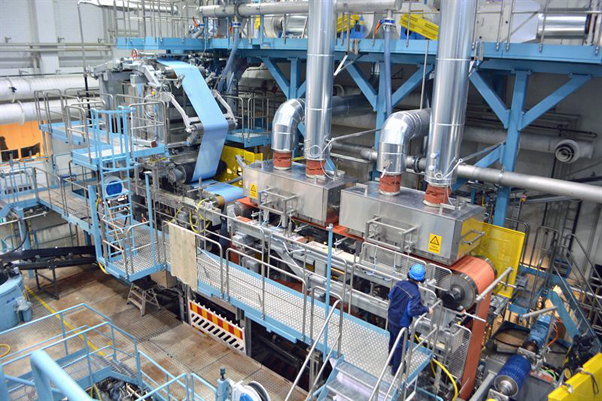VTT Investment Accelerates Development of New Fiber Products
![]() Print this Article | Send to Colleague
Print this Article | Send to Colleague
Cellulose and other fibers are future materials that can replace many plastic and mineral-based materials in the industrial sector. VTT Technical Research Centre of Finland has extended its research environment in Jyväskylä by introducing another pilot line to promote the development of porous materials, insulation products, and nonwovens made from fibers by means of foam technology.
"The scale of our bioproduct development environment, which we use to promote the development of the forest industry, makes it unique in the world. We at VTT believe in the future of cellulose and other natural fibers, as our industry needs new high value-added products in addition to paper and board," said EVP Jussi Manninen from VTT.
The research environment can be used to accelerate the development of new cellulose and fiber-based products from research to commercialization. The machinery enables developing new product concepts and resource-efficient processes together with VTT’s customers and research partners.

The total value of the investment is approximately EUR 3 million. In addition to VTT’s own funds, there is research infrastructure (FIRI) funding from the Academy of Finland involved. The new machinery at VTT’s Jyväskylä unit makes use of the facility’s existing process equipment and control systems.
Until now, part of the new fiber-based products, insulation materials, and nonwoven fabrics has been demonstrated at VTT only on a laboratory scale. The new machinery allows piloting to be taken to a completely new level.
The new research environment was designed on the basis of a questionnaire sent by VTT to companies and other stakeholders to gauge their views on the future of the research and product development market. This led to the creation of a unique development platform for new fiber-based products to complement the paper and board products already on the market.
Foam technology enables the production of lightweight and porous products. New kinds of products could include, for example, sound and thermal insulation, filters, and packaging. The technology is compatible with long fibers as well, which is an advantage in the production of specialty papers, packages, and nonwovens, for example.
The use of foam technology saves raw materials, produces lighter products, lowers energy and water consumption in the production process, and makes it possible to combine different kinds of materials to optimize product properties.
There are a number of partnership projects in progress at the moment that can make use of VTT’s new research environment. Examples include a project called Design Driven Value Chains in the World of Cellulose, which combines design and cellulose technology, and a project called Telaketju, which aims at developing textile waste recycling and associated recycling technologies.
VTT has already taken in orders from customers. The machinery is also being used in an international project called Future Fiber Products, which involves a consortium of 33 companies, and in a few other co-financed projects. The research environment is available for all businesses to use.
Several Finnish companies contributed to the design and assembly of the research environment.


